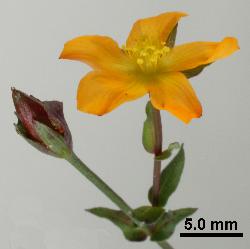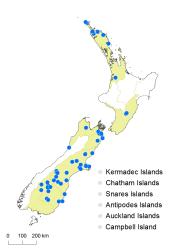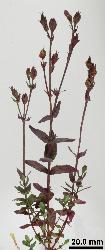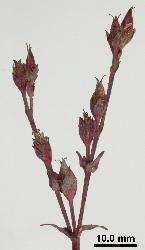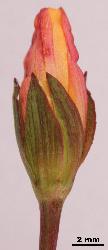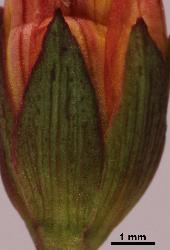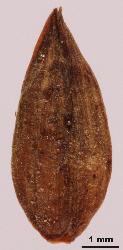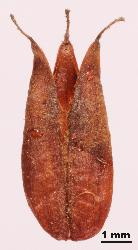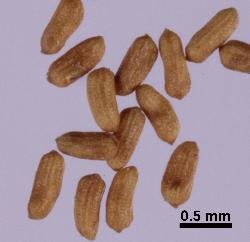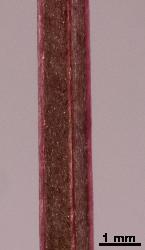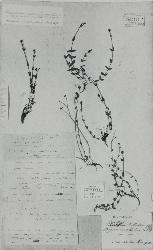- Taxon
- Gallery
- ≡ Ascyrum involutum Labill., Nov. Holl. Pl. 2, 32 (1806)
- ≡ Hypericum pauciflorum subsp. involutum (Labill.) C.Rodr.-Jim., Mem. Soc. Ci. Nat. La Salle 33: 105-106 (1973)
- = Brathys billardierei Spach, Ann. Sci. Nat., Bot. sér. 2, 5: 367 (1836)
Herbaceous perennial, woody stock, not rhizomatous, up to 0.25 m high. Stems erect, up to 1.3 mm diam., quadrangular, 4-lined, black glands absent, unbranched or branched only from base. Leaves 2.5–20.0 mm long, 0.7–6.8 mm wide, lanceolate, ovate, ovate-elliptic, elliptic oblong or broadly elliptic, glabrous, reticulate tertiary veins absent; pellucid glands conspicuous; black glands absent; apex subacute or obtuse; margin entire and sometimes recurved; base subcordate or ± amplexicaul; sessile. Inflorescence terminal, in lax dichasial cymes, flowers 1–10 per cyme, corolla up to 17.0 mm. Pedicels 4.0–40.0 mm long. Bracteoles absent. Sepals 5, 3.0–7.0 mm long, 1.0–2.5 mm wide, unequal, lanceolate, elliptic, elliptic-oblong or broadly elliptic; pellucid glands abundant, usually linear; black glands absent; apex acute or subacute; margin entire. Petals up to 8.0 mm long and up to 4.5 mm wide, longer than sepals, golden yellow, black glands absent, persistent after anthesis. Stamens not in bundles, 30–43, 3.3–4.5 mm long, shorter than petals; anthers 0.25–0.3 mm long, anther gland absent. Ovary 3.0–3.5 mm long, 1.5–2.5 mm wide, ovoid. Styles 3, 1.0–1.8 mm long, shorter than ovary. Fruit capsule, 5.0–9.5 mm long, 3.2–4.5 mm wide, ovoid, light brown, conspicuously protruding beyond sepals, coriaceous. Seeds 0.6–0.85 mm long, 0.25–0.4 mm wide, oblong, terete, yellow to yellow-brown, longitudinally ribbed, apices obtuse or rounded.
H. involutum is distinguished by an absence of black glands, erect, quadrangular and 4-lined stems that branch from a woody base, 3 styles, and the infloresecence is terminal with solitary flowers or with few-flowered dichasial cymes.
North Island: Northland, Auckland, Southern North Island.
South Island: Western Nelson, Sounds Nelson, Marlborough, Canterbury, Otago, Southland.
Also Australia.
Occurs in lowland to montane, dry and open habitats such as on and around rock outcrops, under open manuka and kanuka stands, and in sparsely vegetated tussock-grassland.
Also indigenous to Australia.
A putative hybrid between H. involutum and H. pusillum has been collected from Takahue, Northland (CHR 295786).
Flowering: Oct.–Mar.
n=8, 2n = 16 (Hair & Beuzenberg 1959, as H. gramineum; de Lange et al. 2004, as H. gramineum).
Australian plants of H. involutum differ from New Zealand plants in having a slightly smaller capsule (5.0–6.5 mm long compared with 5.0–9.5 mm long) and fewer stamens (9–27 compared with 30–43). Further study of additional Australian and New Zealand specimens is required to determine the significance of this variation.



